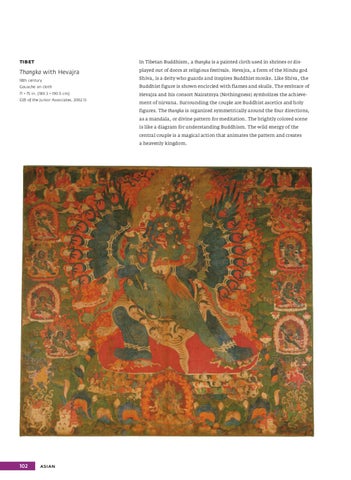tibet
In Tibetan Buddhism, a thangka is a painted cloth used in shrines or dis‑
Thangka with Hevajra
played out of doors at religious festivals. Hevajra, a form of the Hindu god
18th century
Shiva, is a deity who guards and inspires Buddhist monks. Like Shiva, the
Gouache on cloth
Buddhist figure is shown encircled with flames and skulls. The embrace of
7 1 × 75 in. ( 180.3 × 190.5 cm)
Hevajra and his consort Nairatmya (Nothingness) symbolizes the achieve‑
Gift of the Junior Associates, 2002.13
ment of nirvana. Surrounding the couple are Buddhist ascetics and holy figures. The thangka is organized symmetrically around the four directions, as a mandala, or divine pattern for meditation. The brightly colored scene is like a diagram for understanding Buddhism. The wild energy of the central couple is a magical action that animates the pattern and creates a heavenly kingdom.
102
asian
3121-02 DMA handbook Ancient [RCP 10-7].indd 102
10/11/11 4:11 PM
